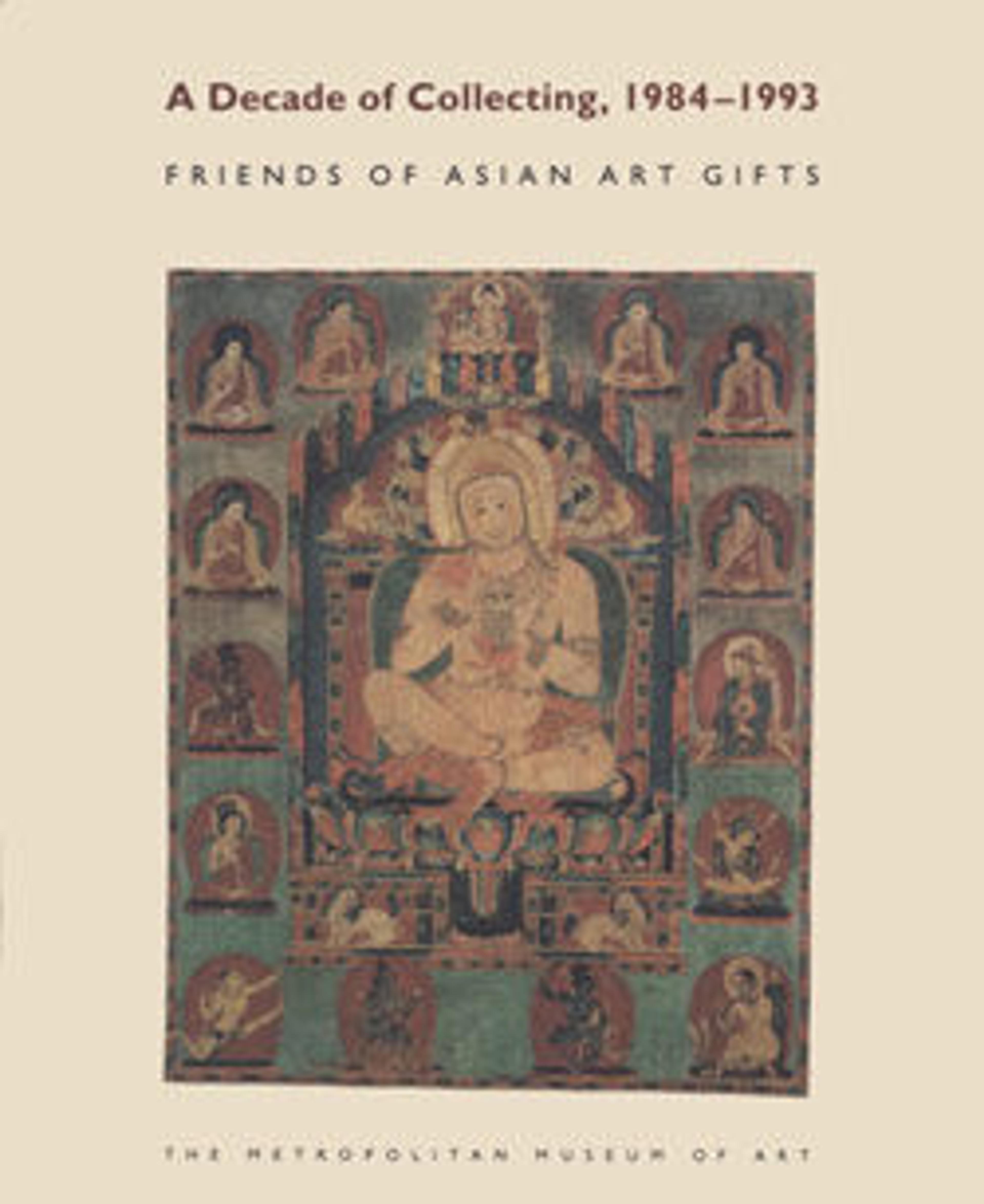Segment of Chapter 19 of the Lotus Sutra
In Buddhism, transcribing and preserving sacred teachings results in the accrual of religious merit. This hanging scroll preserves a fragment of a sumptuously decorated multivolume transcription of the Lotus Sutra. Brushed in ink on paper adorned with gold and silver, the five lines are from the middle of Chapter 19, which describes how the six senses (sight, hearing, smell, touch, taste, and mind) can be purified by reading, reciting, copying, studying, and upholding the teachings of the sutra. The passage lists a series of smells (香) discernible by believers, including fragrant flowers and trees as well as the odors of different animals and people.
Artwork Details
- 伝九条兼実書 『妙法蓮華経』 法師功徳品第十九の内
- Title: Segment of Chapter 19 of the Lotus Sutra
- Artist: Attributed to Kujō Kanezane (Japanese, 1149–1207)
- Period: Heian period (794–1185)
- Date: late 12th century
- Culture: Japan
- Medium: Handscroll section mounted as a hanging scroll; ink on colored paper decorated with cut gold (kirikane), sprinkled gold (sunago), and silver leaf
- Dimensions: 10 x 3 9/16 in. (25.4 x 9.1 cm)
- Classification: Paintings
- Credit Line: Purchase, Friends of Asian Art Gifts, 1990
- Object Number: 1990.116
- Curatorial Department: Asian Art
More Artwork
Research Resources
The Met provides unparalleled resources for research and welcomes an international community of students and scholars. The Met's Open Access API is where creators and researchers can connect to the The Met collection. Open Access data and public domain images are available for unrestricted commercial and noncommercial use without permission or fee.
To request images under copyright and other restrictions, please use this Image Request form.
Feedback
We continue to research and examine historical and cultural context for objects in The Met collection. If you have comments or questions about this object record, please contact us using the form below. The Museum looks forward to receiving your comments.
